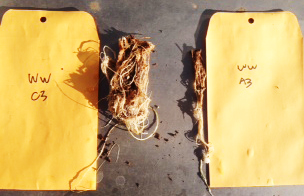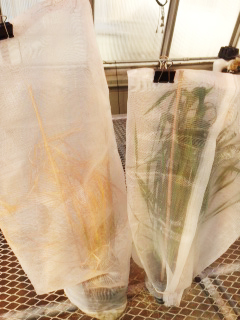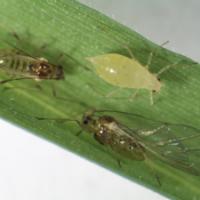New aphid damages wheat more than crops
A new aphid has been found in North America! was pronounced in July 2013.
We have assessed key aspects of aphid ecology, including aphid host plant preference and reproductive rates, on eight grass species including four native grasses (bluebunch wheatgrass, blue wild rye, Idaho fescue, and rough fescue) and four cereal crops (corn, wheat, barley, and oat). Aphids prefer wheat and avoid corn, but aphids also colonize barley, oat, and native grasses. Aphid reproduction is high on wheat and barley, intermediate on oat and blue wild rye, poor on Idaho fescue, rough fescue, and bluebunch wheatgrass, and aphids cannot survive on corn.
We have also determined that aphid feeding has substantial impacts on plant growth: wheat, rough fescue, and bluebunch wheatgrass are highly susceptible to aphid feeding damage in both shoot growth and root growth; although barley, corn, oats, Idaho fescue and blue wild rye were not damaged by aphids.


Our work suggests that wheat and barley are preferred by M. festucae cerealium, and that aphids reproduce most rapidly on these hosts and cause significant reductions in wheat but not barley growth. Also, M. festucae cerealium appears capable of surviving on native grasses, though only bluebunch wheatgrass and rough fescue are likely to be threatened by this species.


